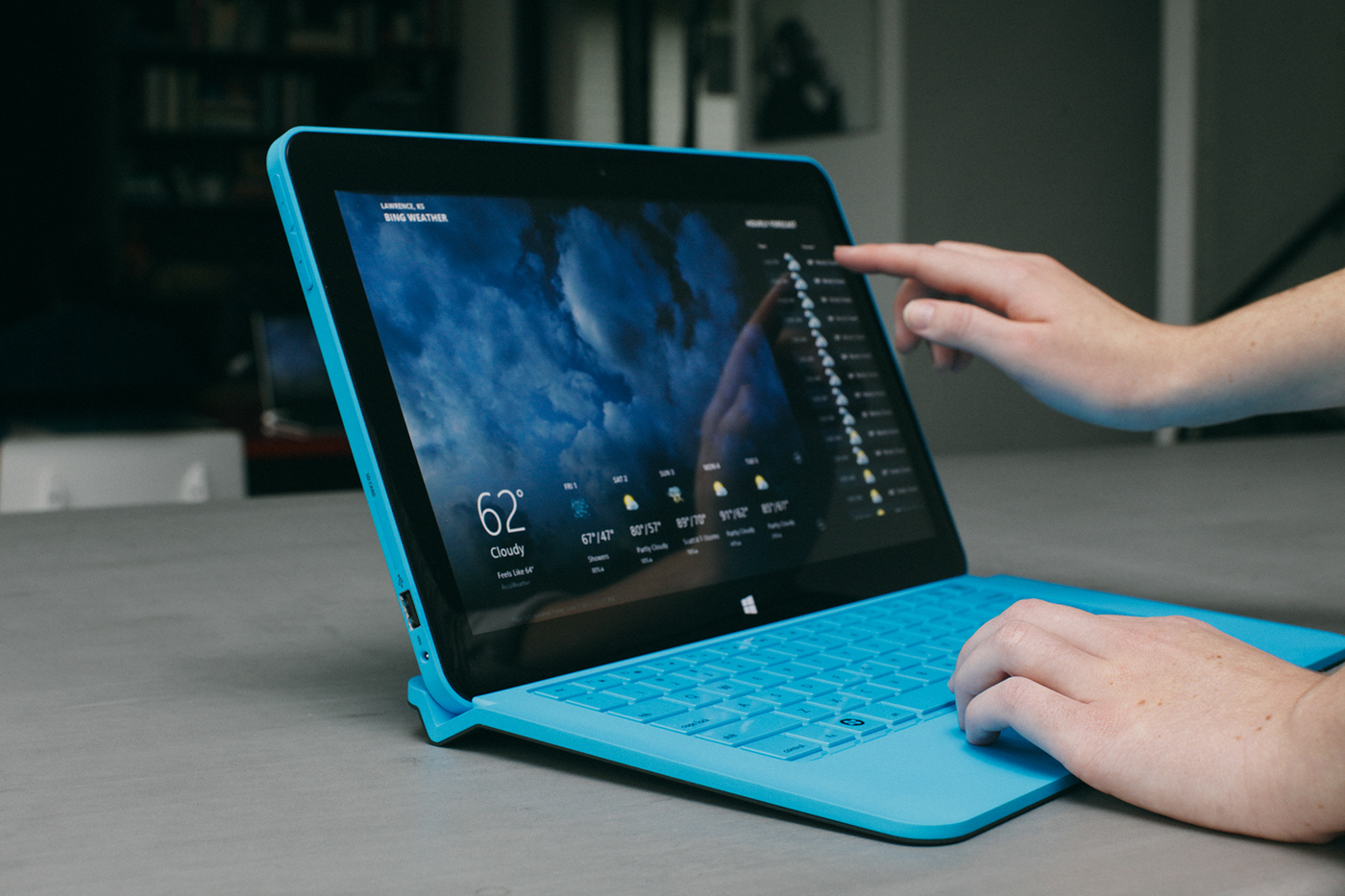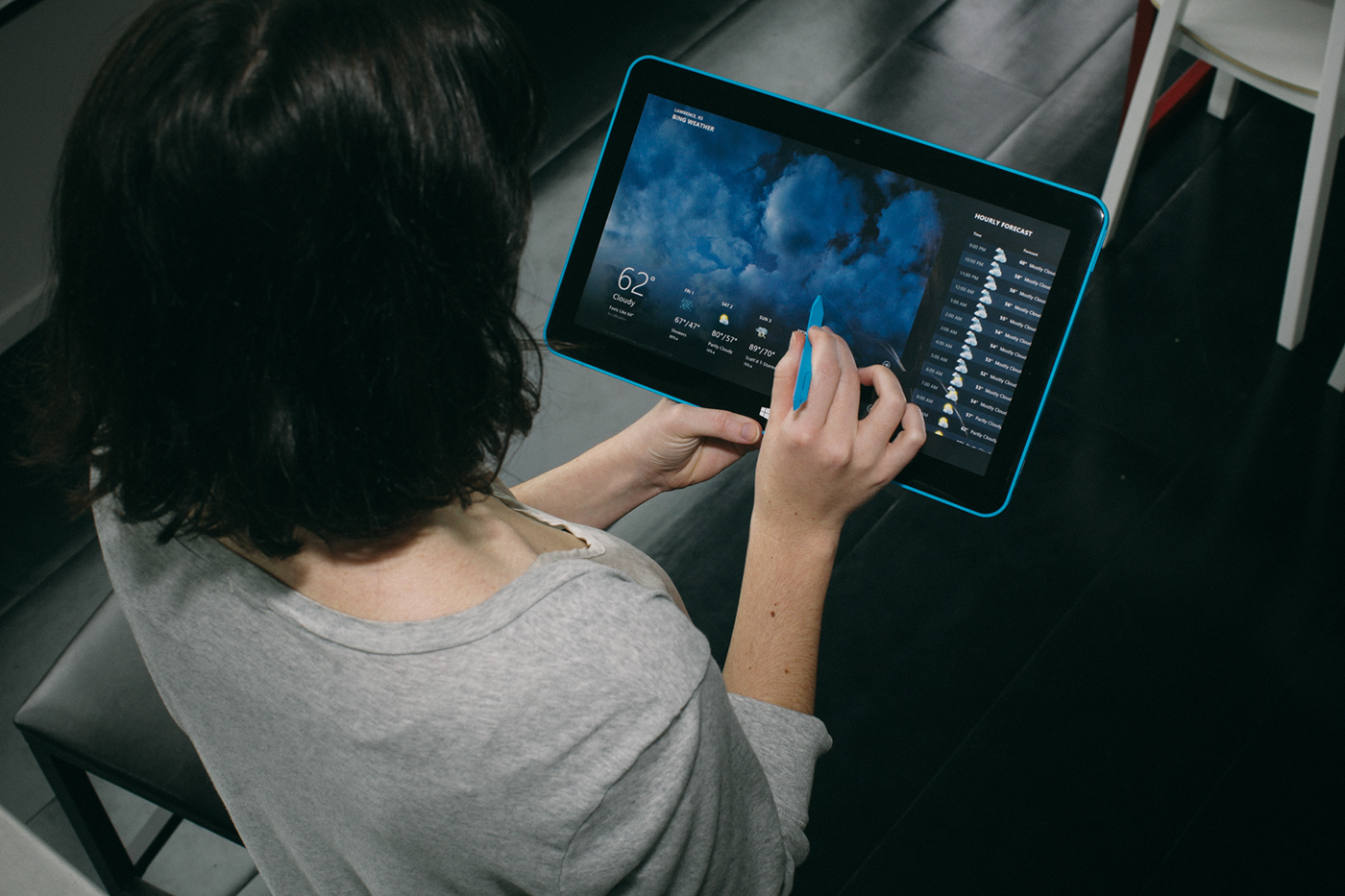Re-imagining the PC.
In the pursuit of creating the next generation of Ultrabooks there is a measure of category creation taking place. This is especially evident in the "hybrid" pc which blends the power and productivity of a laptop with the versatility and portability of a tablet. The problem, though, is that there is too much debate about which should come first: would someone rather buy a notebook, which becomes a tablet?...or would they rather buy a tablet which can become a notebook? Vale asks a different question and presents a product experience which feels very much like it's own thing.
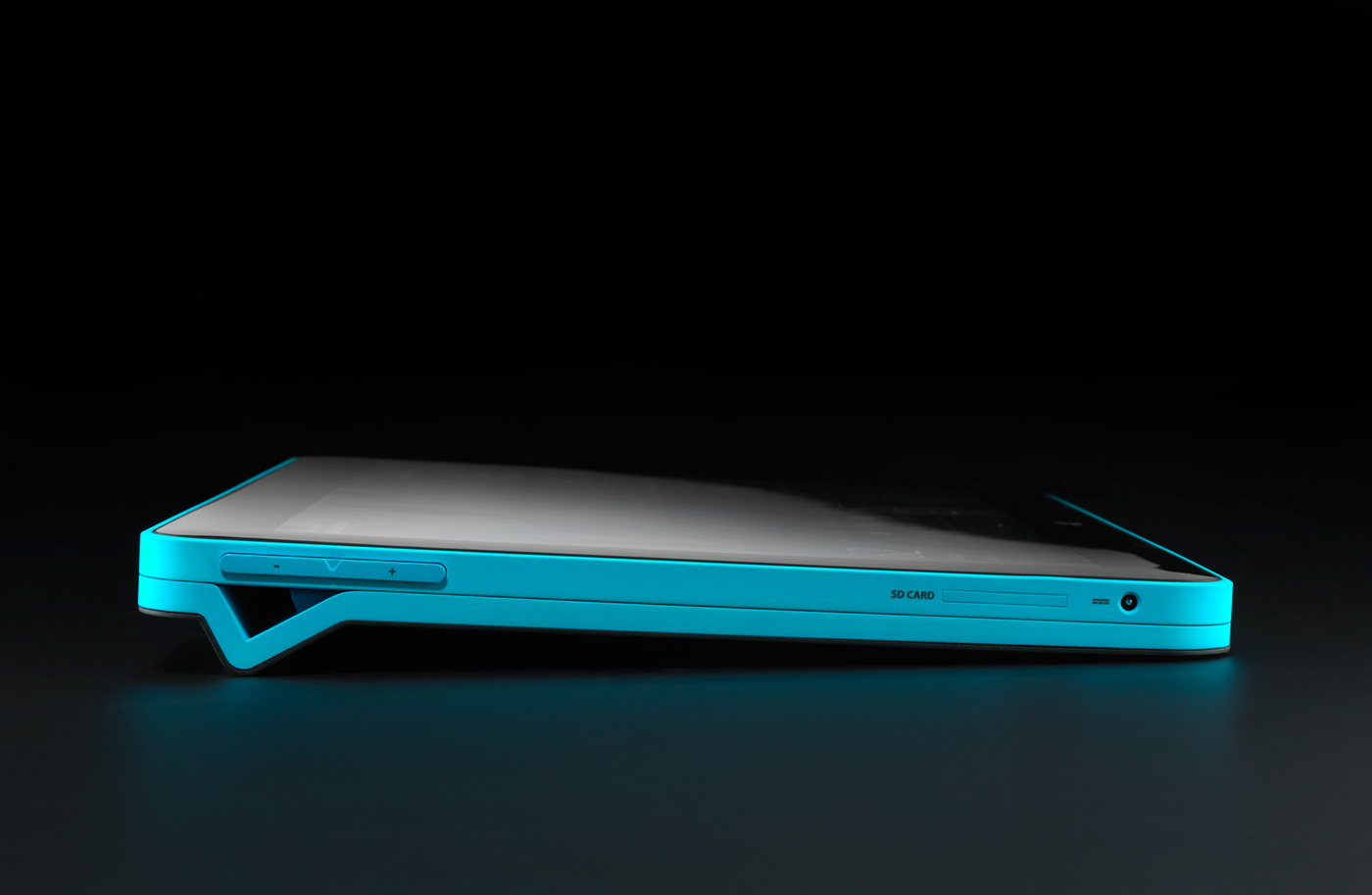
Nothing is arbitrary: The contour of Vale tells the story of what it is and what it does - the V-shaped foot angles the display slightly off the table when configured "screen up," but also positions the screen at the right angle for laptop use. The slight gap above the table gives clearance for air-flow. And the notch between the display and the base creates a natural affordance for detaching the two peices.
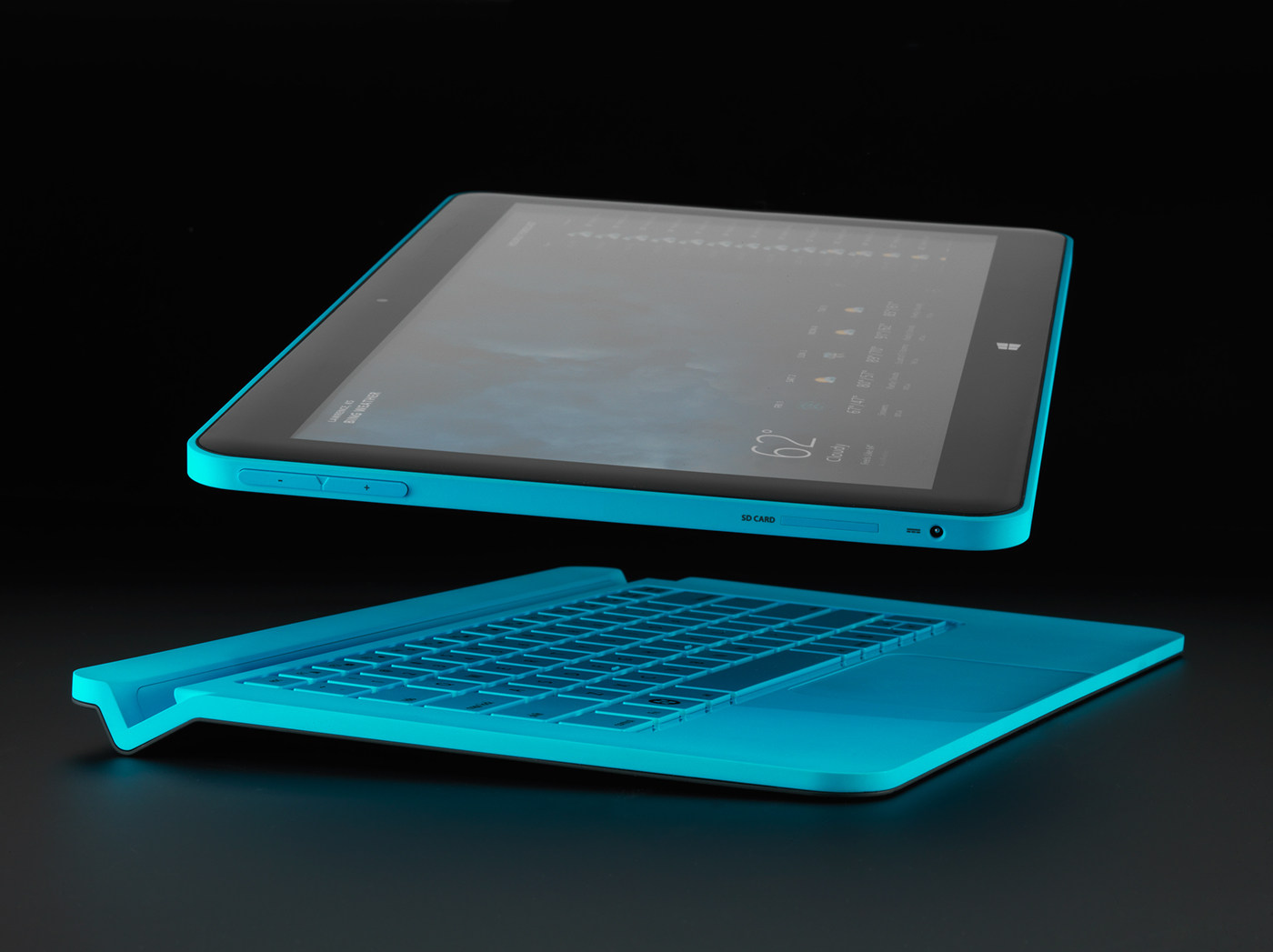
Lose nothing in translation: A lot of discussion was put into whether the base should greatly expand the capabilities (and also size and weight) of the Ultrabook when attached: should it offer more IO ports, double the battery life, boost the performance, provide a wi-fi boost? In the end, the right decision was a "what you see is what you get" approach. When you detach the keyboard and trackpad, that is precisely what you leave behind...the rest of the experience remains perfectly intact. I think this was a smart move. Instead of offloading performance to a detachable peice of the system, more effort was placed into packing that performance into the space behind the screen.
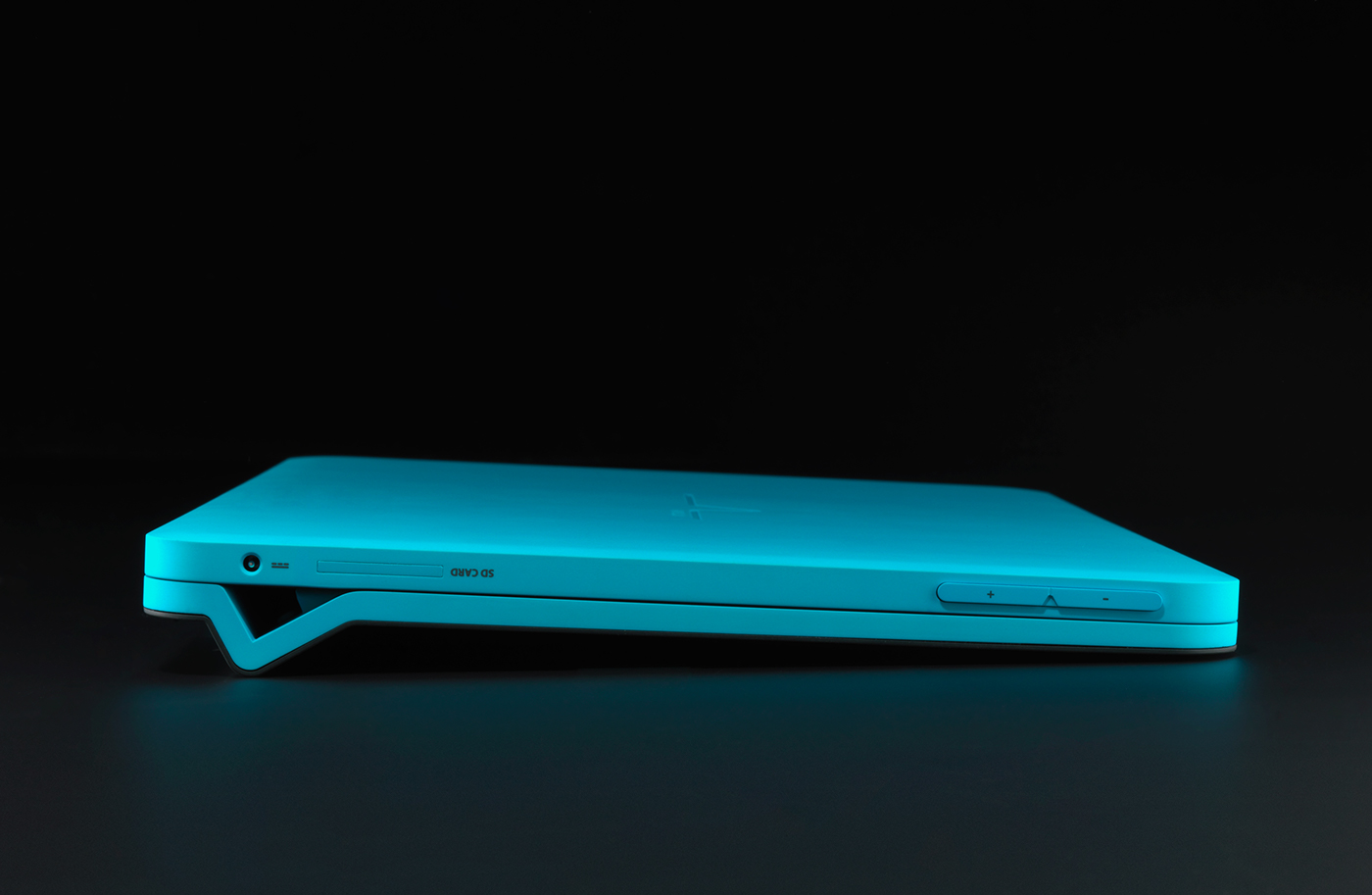
At the time, the biggest discussion around convertibles and detachables was what kind of hinge to use. With Cove Point, we were looking at huge development time to get hinges to feel right, to have just the right amount of structure and movement. Vale does away with the hinge entirely, and also the development time - making for an extremely feasible ultrabook design.

Use space appropriately. Most of Vale's weight is in the lid. For this reason, the foot needed to be about 23mm from the back. Since we didn't have a hinge, we didn't need to grow the system to accomodate this - but we did have about 23mm of unused space behind the foot. A beautiful home for an active stylus.
In the end, Vale is about showing the world the potential of Intel Haswell architecture.
